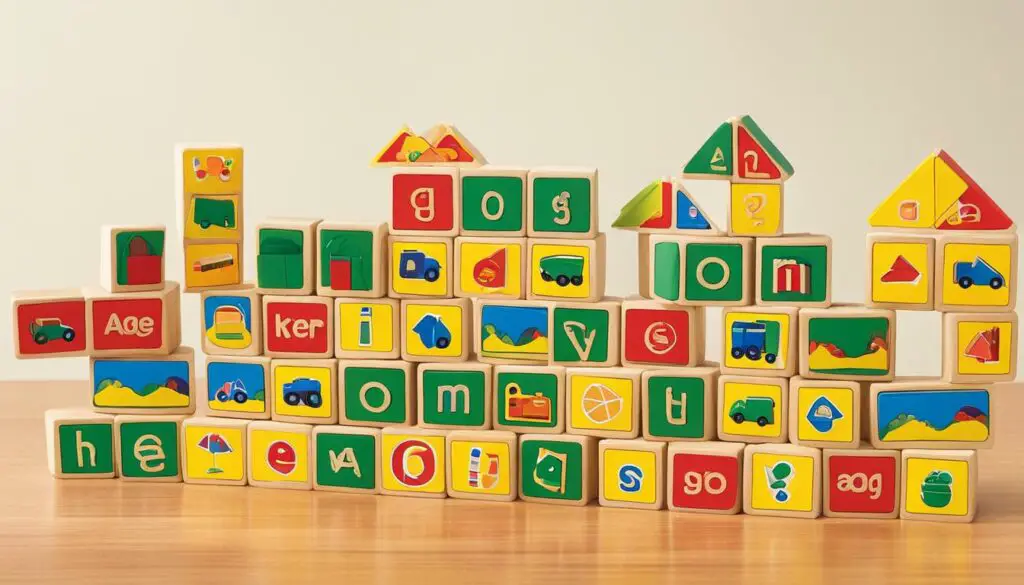
Effective Communication Techniques for Engaging with Children
As a professional working with children, I understand the importance of effective communication techniques when engaging with them. Children have unique needs and require specialized methods of communication that can help them feel heard and valued.
In this section, we will explore various effective communication techniques that can be used to create meaningful connections with children. These techniques can help build strong relationships and enhance understanding, leading to better outcomes for both children and adults.
Key Takeaways:
- Effective communication helps foster understanding and build relationships with children.
- Active listening is crucial for effective communication with children.
- Nonverbal communication can enhance understanding and connection.
- Using age-appropriate language is crucial for effective communication with children of different age groups.
- Building trust and empathy are essential components of effective communication with children.
Importance of Active Listening
As a fundamental aspect of effective communication with children, active listening can significantly impact the quality of your interactions. It involves more than just hearing the words they say; it entails focusing on their thoughts, feelings, and emotions. When children feel that they are being listened to, they feel valued and respected.
Active listening is not just about being present in the conversation; it requires being engaged and showing genuine interest in what the child has to say. Some key tips to actively listen to children include:
- Focus on the Child: Eliminate distractions and give undivided attention to the child. Maintain eye contact, providing reassurance and signaling your attentiveness.
- Show Empathy: Acknowledge their feelings, and validate their experiences. Use phrases like, “I can see how that might have been frustrating for you” to communicate your empathy and support.
- Avoid Interrupting: Let the child speak without interruption, offering them ample time to express their thoughts.
- Ask Open-Ended Questions: Encourage them to elaborate and share their perspective by utilizing open-ended questions. Questions like “Can you tell me more about that,” can help you gain a deeper understanding of their thoughts and feelings.
By actively listening to children, we foster deeper relationships, inspire trust, and create an environment where children feel heard and valued.
Example of Active Listening in Action
Imagine a scenario where your child comes back from school and expresses frustration about a project that they were struggling to complete. You could actively listen and respond in the following way:
Child: “I don’t know how to finish this project. It’s hard, and I can’t do it.”
You: “I understand that you’re feeling frustrated and overwhelmed right now. Can you tell me more about what you’re finding challenging in this project?”
The above response reassures the child that their frustration is acknowledged, while also helping you gain a deeper understanding of their challenges.
Nonverbal Communication Strategies
When communicating with children, nonverbal communication can be just as important as the words we use. Nonverbal cues such as body language, eye contact, facial expressions, and gestures can all contribute to enhancing understanding and connection. By paying attention to these cues, adults can convey warmth, empathy, and interest in what the child is saying.
Body Language: Our body language can say a lot about how we are feeling and what we mean. When communicating with children, it is essential to be mindful of our body language and adjust it accordingly. For example, leaning in slightly and maintaining an open posture can show that we are actively listening and engaged.
Facial Expressions: Our facial expressions can also signal our emotions and attitudes. Smiling when appropriate, maintaining eye contact, and nodding as the child speaks can all convey warmth, understanding, and support.
Gestures: Using gestures can also be an effective way to communicate with children, particularly when explaining complex concepts or ideas. Pointing, using hand movements, and using visual aids can all help to make our message clearer and more engaging.
Using Age-Appropriate Language
When communicating with children, it is essential to use language that is suitable for their age and development level. Speaking in a way that is understandable and relatable to children can help build rapport, foster trust, and promote effective communication.
For younger children, using simple words and short sentences can aid comprehension and keep their attention. Avoid using difficult words or complicated language that they may not understand. Try to relate the language to things that they know or have experienced to help them connect and engage more easily.
When speaking with older children, it is important to adjust your language to match their level of understanding. As children grow and mature, their vocabulary and language comprehension also increases. Using more complex language and ideas can help challenge them and stimulate their cognitive development. However, it is crucial to still speak in a way that is clear and easy to comprehend.
Remember to:
- Speak in a way that children can understand
- Use simple language and short sentences for younger children
- Adjust your language to match the level of understanding for older children
- Relate language to things that children know and have experienced
Example:
| Age of Child | Inappropriate Language | Appropriate Language |
|---|---|---|
| 3 years old | “Can you articulate how you feel?” | “Can you tell me how you’re feeling?” |
| 10 years old | “I am exceedingly disappointed in your actions.” | “I am very disappointed with what you did.” |
Using age-appropriate language can help make communication with children more effective and positive. By tailoring your language to the child’s age and development level, you can ensure that you are connecting and engaging with them in a way that is meaningful and understandable.

Building Trust and Empathy
In order to effectively communicate with children, building trust and empathy are essential. These components are crucial for creating meaningful connections and establishing healthy relationships with children.
One strategy for building trust and empathy is by validating their feelings and acknowledging their emotions. When a child shares their feelings, it is important to listen actively and respond in a non-judgmental way.
“I hear that you’re feeling frustrated because you didn’t get to play with the toy you wanted. Is that right?”
Additionally, creating a safe and supportive environment can help build trust and empathy. Children thrive in environments where they feel heard and valued. Building a sense of trust and safety can be achieved by using positive reinforcement and providing a consistent routine.
For example: “I really appreciate how well you shared your toys with your friend. That was so kind of you.”

Overall, building trust and empathy are key when effectively communicating with children. By validating their feelings, acknowledging their emotions, and creating a safe and supportive environment, a strong connection and healthy relationship can be formed.
Conclusion
In conclusion, I believe that effective communication techniques play an essential role in engaging with children. By utilizing active listening, nonverbal communication, age-appropriate language, and building trust and empathy, adults can establish meaningful connections with children at different stages of their development.
It is crucial to remember that communication is a two-way process, and we must always make an effort to listen to and understand children’s perspectives. By doing so, we can create a safe and supportive environment where children feel seen, heard, and valued.
As a journalist in this field, I have seen firsthand how effective communication techniques can make a significant impact on children’s lives. It is my hope that this article has provided valuable insights and practical tips for communicating with children effectively. By implementing these techniques, we can foster understanding, build strong relationships, and promote healthy development in children.
FAQ
What are some effective communication techniques for engaging with children?
Some effective communication techniques for engaging with children include active listening, using age-appropriate language, utilizing nonverbal communication strategies, and building trust and empathy. These techniques help foster understanding and build strong relationships with children.
Why is active listening important when communicating with children?
Active listening is important when communicating with children because it shows that you are genuinely interested in what they have to say. It helps children feel heard, valued, and understood. Active listening involves giving your full attention, maintaining eye contact, and responding with empathy.
What are some nonverbal communication strategies that can enhance understanding with children?
Nonverbal communication strategies such as body language, facial expressions, and gestures can enhance understanding when communicating with children. Using positive body language, maintaining eye contact, and smiling can convey warmth and openness, while matching your facial expressions to the child’s emotions can help them feel understood.
How can I use age-appropriate language when communicating with children?
Using age-appropriate language involves adapting your vocabulary and speaking style to match the developmental level of the child. It is important to use simple and clear language, avoid jargon or complex terms, and provide explanations or examples when needed. Tailoring your language to the child’s age helps ensure effective communication and understanding.
How can I build trust and empathy when interacting with children?
Building trust and empathy with children involves validating their feelings, acknowledging their emotions, and creating a safe and supportive environment. Show empathy by being understanding, patient, and compassionate. Trust is built through consistent, respectful, and honest communication. Building a strong foundation of trust and empathy helps establish a positive and healthy relationship with children.
Why are effective communication techniques important for engaging with children?
Effective communication techniques are important for engaging with children because they promote understanding, build meaningful relationships, and create a safe and supportive environment. By utilizing techniques such as active listening, nonverbal communication, age-appropriate language, and building trust and empathy, adults can effectively communicate with children and foster their overall development.